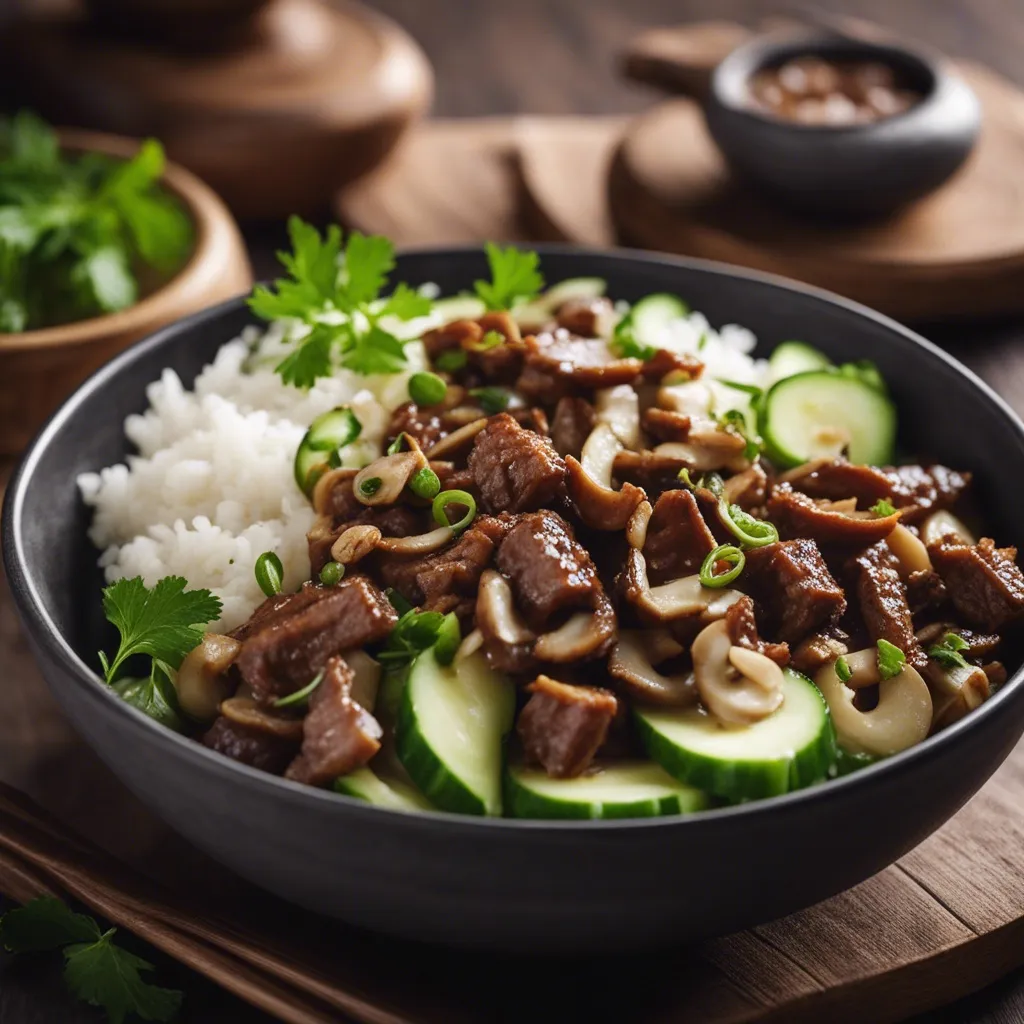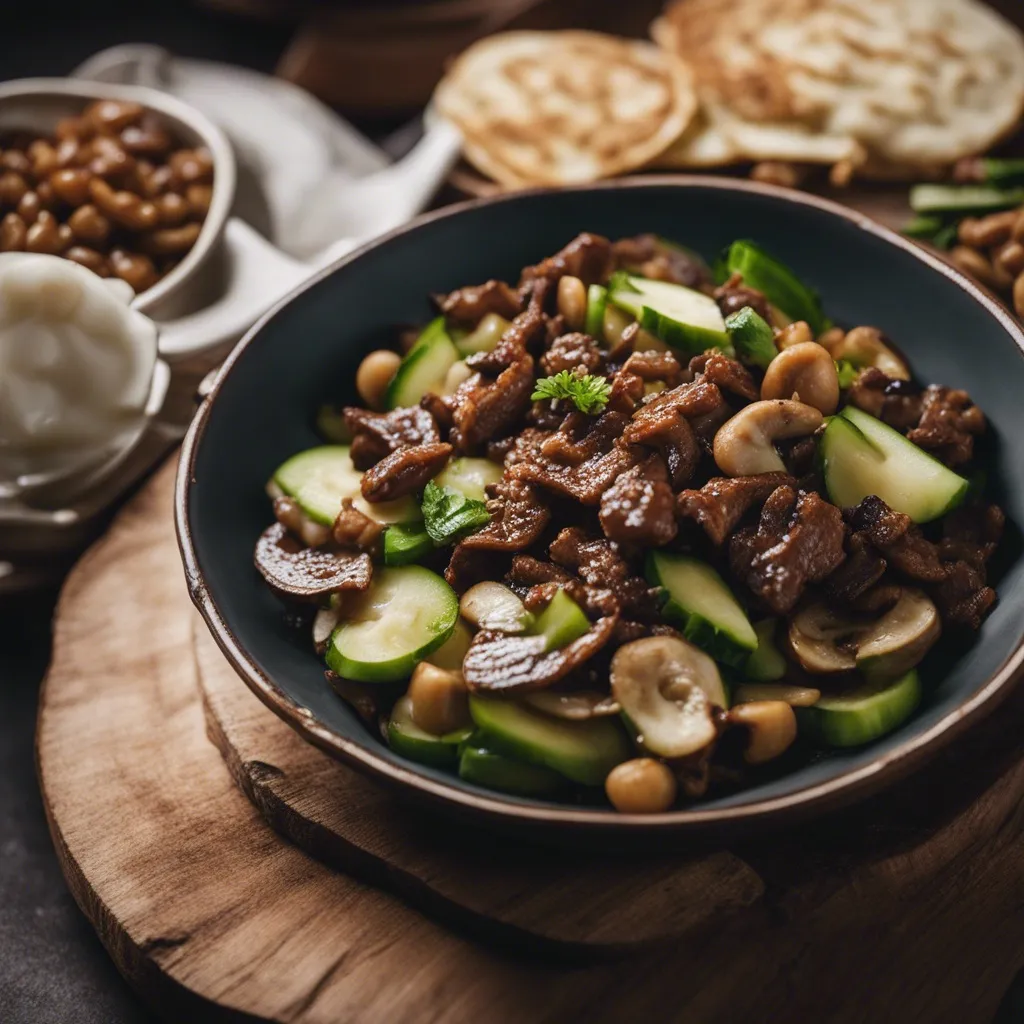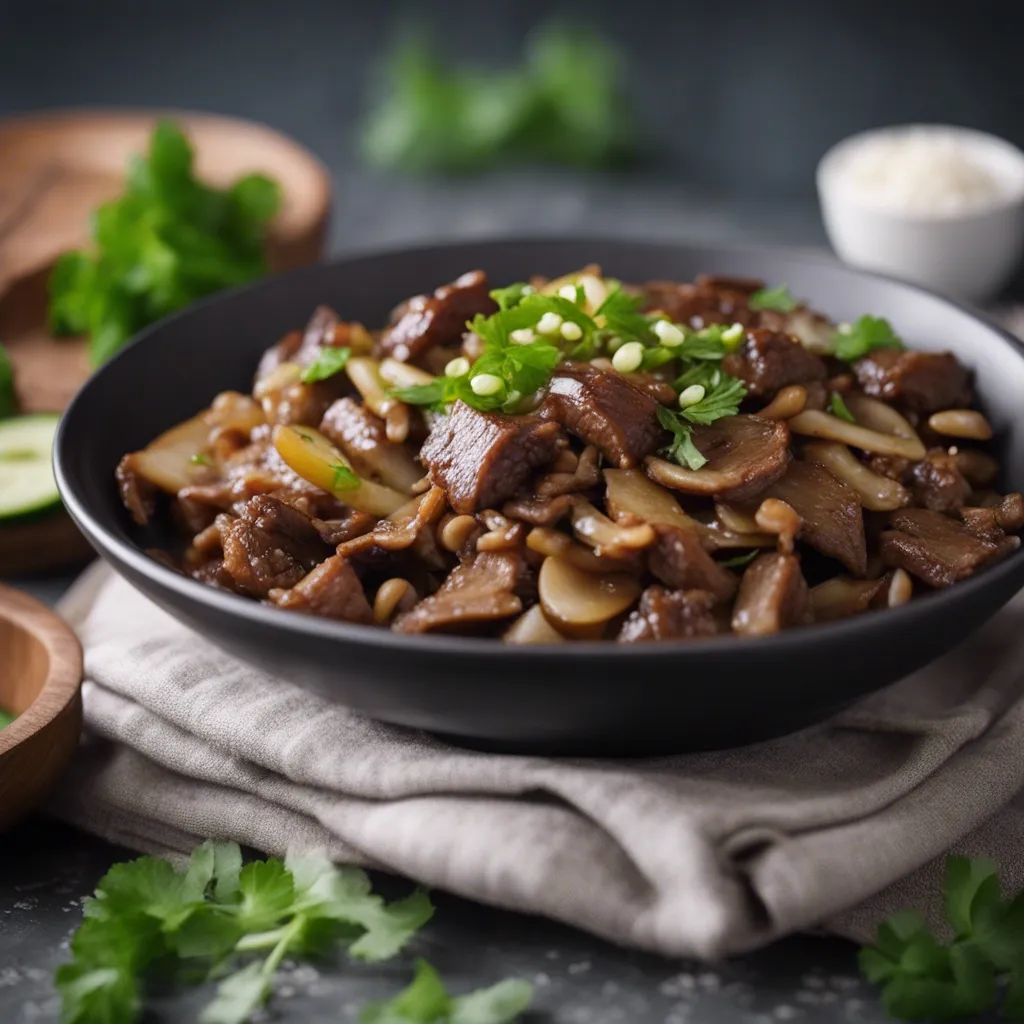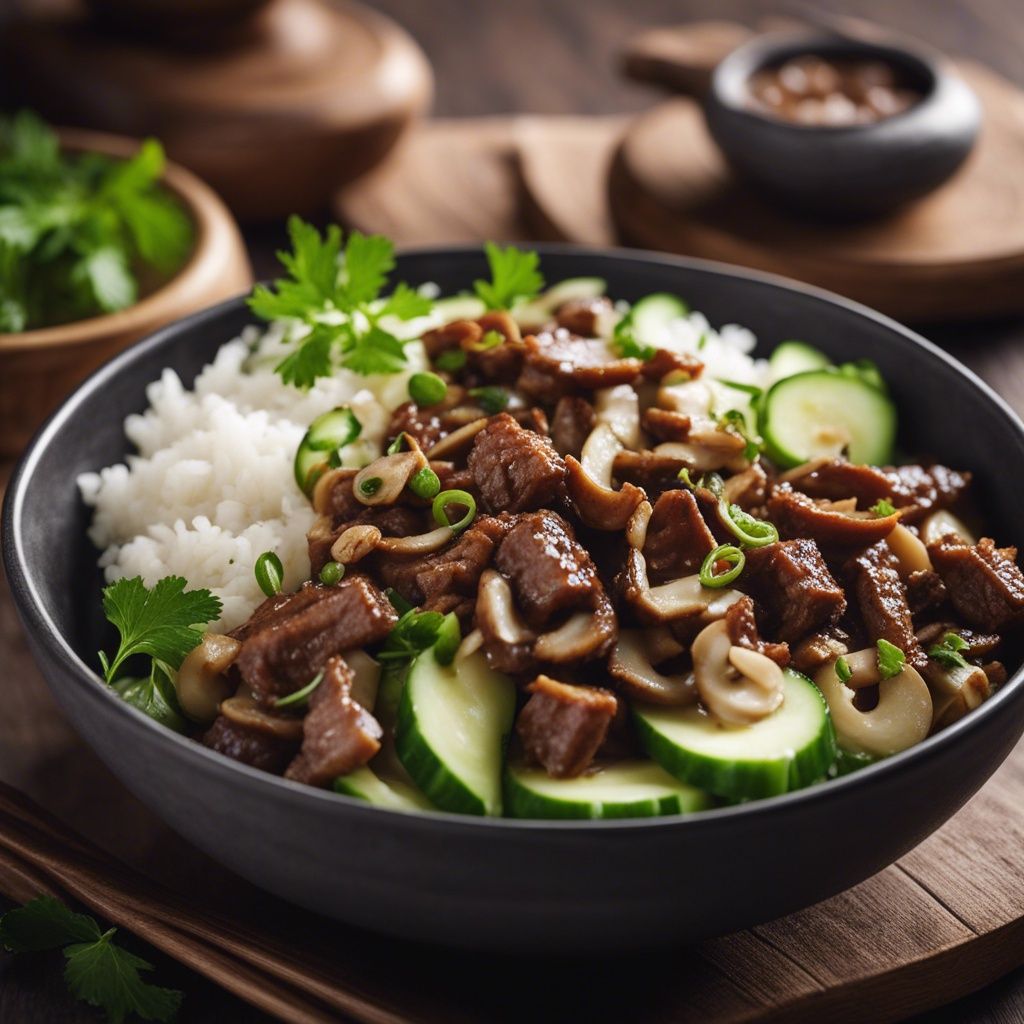Moo Shu Beef
Moo Shu (also spelled as Mu Shu, Mu Xu, Moo Shi, and mù xū ròu) is a dish that originated in the Shandong province of China. It’s typically made with pork; however, we’ve found that it works great with beef. The name ‘Moo Shu’ refers to the egg in the dish, reminiscent of the tiny yellow flowers of the Osmanthus tree in blossom.

Rice, Tortillas, or Pancakes
We tried Moo Shu with rice, tortillas, and pancakes. In our view, plain white rice complements it perfectly. However, we still found that tortillas and pancakes made this a more interactive family favorite. Furthermore, Chinese pancakes with a brush of hoisin sauce added to the depth and complexity of the flavor. We recommend giving all of them a try. With these simple variations, Moo Shu beef feels like a different dish depending on which one you use, allowing for variety without mixing up the core ingredients too much.

Traditional Ingredients (Wood Ear Mushroom & Lily Buds)
Due to the origins of this dish, you might not be familiar with Wood-Ear mushrooms or Lily Buds. We decided to omit these in our recipe because these can be hard to source and aren’t everyday pantry staples outside of Chinese cuisine. However, it’s hard to talk about Moo Shu without mentioning them.
Wood-ear mushrooms are commonly purchased, shredded, and dried in Asian markets. The name comes from their appearance when found growing as they are easily mistaken for a seemingly human ear growing directly on trees, commonly elder trees. Unlike typical mushrooms, they have a more jelly-like texture but still possess an earthy taste. Lily Buds is a starchy root vegetable, most commonly dried in Asian markets, tasting very similar to potatoes. These are typically used in Chinese stir-fries or grated for thickening soups.
If you make Moo Shu Beef often, we strongly recommend you head to your local Asian market to pick these up as they improve the dish. However, if it’s your first time making Moo Shu, it’s most likely better to stick with the familiar ingredients in this recipe.
Shaoxing wine
Shaoxing wine, also known as yellow wine, is a traditional Chinese wine made from glutinous rice (also known as sticky rice, sweet rice, or waxy rice), water, and wheat-based yeast. If you ever wonder why you can’t quite get your Chinese food to taste as good as a restaurant, this might be the missing ingredient. The taste is vinegary, spicy, and caramel-like. You should easily be able to find this in your local Asian market or online. Still, if you can’t find it or don’t want to risk buying another ingredient you’ll only use once, you can substitute it for dry sherry, mirin, or Japanese rice wine.
Cucumber
Cucumber is a familiar ingredient for most home cooks, but it’s rarely cooked and often eaten sliced and raw. We cook the cucumber at the end of this recipe on high heat for only a minute. This method ensures the cucumber keeps its freshness and texture. The cucumber balances the Moo Shu sauce by offering a freshness and crunchy texture that cuts through any saltiness.
Additionally, you might not be accustomed to de-seeding a cucumber, but this reduces the amount of moisture that the cucumber brings to the sauce, allowing you to regulate the thickness of the sauce to your preference and ensure the sauce covers everything in the stir-fry.
Other Recipes
If you like this Moo Shu Beef recipe, here are some others you might like;

Do I need a wok?
In Chinese and most Asian cuisines, you will find a wok is a must. There's a carbon steel wok in just about every Chinese kitchen because of its versatility and thermal conductivity. Woks heat exceptionally quickly and match the temperature of your burner. However, if you do not make Asian cuisine often, it might be a waste of space in your kitchen. You can get excellent results with a cast-iron skillet or a Dutch oven. Before making this dish, however, pre-heat the cast-iron skillet in your oven to its maximum temperature, only removing it to put it on the burner just before you start cooking. Heating the cast-iron skillet in the oven will allow you to match the temperatures used on commercial burners that are often much more powerful than the burners typically found in the home.
How can I store Moo Shu beef?
Store the mixture of Moo Shu beef in an airtight container in the fridge for up to 4 days.
Moo Shu Beef
Moo Shu beef is a delicious variation of the traditional northern Chinese Moo Shu pork dish. The meal combines beautiful flavors of saltiness, subtle sweetness, a lovely earthy texture from the mushrooms as well as a little bit of acidity.
Cuisine
American-chinese
Serves
4
Prep
10 mins
Cook
0 mins
Total
10 mins
Calories
422 kcal

Ingredients
½ lb thinly sliced beef
1 teaspoon cornstarch
4 teaspoons Shaoxing wine
½ teaspoon sesame oil
1 teaspoon minced ginger
3 teaspoons light soy
1 tablespoon oyster sauce
2 tablespoons water
3 medium eggs
¼ teaspoon salt
1 cup chopped, de-seeded cucumber
1 cup sliced mushrooms
2 scallions
3 tablespoons cooking oil
8 Chinese pancakes (or flour tortillas)
Instructions
Mix the beef slices with 1 teaspoon of cornstarch, 1 teaspoon Shaoxing wine, ½ teaspoon sesame oil, 1 teaspoon minced ginger, and 1 teaspoon light soy. Let the beef slices marinate for at least 30 minutes.
Mix 3 eggs until the yokes and whites are well incorporated.
Add 1 tablespoon oil to a hot wok. Add the mixed eggs, 1 teaspoon Shaoxing wine, and ¼ teaspoon salt to the wok. Mix the eggs with a spatula in the wok until the eggs form small curds. Once cooked, remove the eggs and place them on a separate plate.
Add 2 tablespoons of oil to the pan and wait for the oil to start smoking slightly.
Add the slices of beef to a hot wok; it should be hot enough that the beef will sizzle the moment it touches the wok. Be careful not to overcrowd the wok.
Bring the meat to a lightly browned color, then add the stir-fry sauce: 2 teaspoons light soy, 1 tablespoon oyster sauce, 2 tablespoons water, 2 teaspoons Shaoxing wine, as well as the scallions, stirring continuously.
After roughly 1 minute, add the sliced de-seeded cucumbers and mushrooms and stir for 30 seconds to 1 minute.
Return the egg to the wok and continue to cook for another 30 seconds to 1 minute until incorporated.
Remove the Moo Sho Beef from the wok and serve with warmed Chinese pancakes, flour tortillas, or plain rice.
Nutrition
- Calories 422 kcal |
- Carbohydrate Content 31.7 g |
- Cholesterol Content 10.2 mg |
- Fat Content 22.5 g |
- Fiber Content 3.6 g |
- Protein Content 25 g |
- Serving Size 1 portion |
- Sodium Content 173 mg |
- Sugar Content 5.4 g |
About the author
Emma Donin is the culinary maestro behind this blog that serves as a melting pot of global cuisines and gastronomic adventures. Her culinary journey began in her grandmother's kitchen, where she learned the fundamentals of cooking and the importance of using fresh, quality ingredients.
